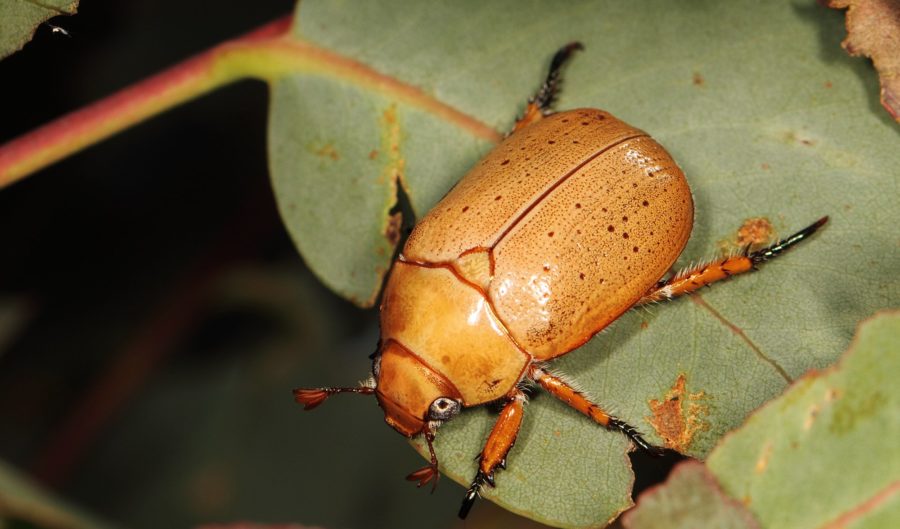Where have all the Christmas beetles gone?

Forget frosted grass and snow-covered windowsills, in Australia it’s the Christmas beetle that heralds the start of the festive season.
The metallic scarabs are synonymous with summer Down Under – or at least they used to be. Anecdotal evidence suggests Australia’s endemic Christmas beetle (Anoplognathus) population is on the decline, or has at least taken a hit in the short term. Entomologist Dr Chris Reid, from the Australian Museum, attributes the drop in sightings to drier than usual spring weather, especially along the coast of New South Wales.
“In the last three years I’ve hardly seen any Christmas beetles at all where I live (south of Sydney), whereas I used to be able to run public school courses on looking at invertebrates just by collecting 30 or 40 at the lights in a single night,” Chris says.
Christmas beetles in the greater Sydney region have also been victims of urban sprawl, with species disappearing from the city’s west due to development and subsequent habitat loss.
Where do Christmas beetles live, and how?
The Christmas beetle is found across Australia, with the exception of our deserts. There are around 35 endemic species, with the most common ones including Anoplognathus chloropyrus and Anoplognathus montanus (both golden-brown beetles).
The classic habitat for Christmas beetles is woodland, where there are plenty of trees and rich soil. The larvae develop in soil, and remain there as curl grubs, feeding on grass and plant roots, as well as the surface roots of eucalypts. As adults they mainly eat eucalyptus leaves, but are known to consume the foliage of introduced species, such as the peppercorn tree.

The life cycle of the Christmas beetle is between one and two years, depending on conditions and species. You’ll see most species emerge as adults in mid-November to early December, and hang around until Christmas and sometimes into February. The adult lifespan is a few weeks, and that’s if they’re fortunate enough not to become a meal for birds.
Why Christmas?
The reason we only see these colourful insects during the festive season has nothing to do with Saint Nick; the end of spring and start of summer is when the larvae hatches. “The adults aren’t active during the winter months; they’re larvae only during those months,” Chris says. “When we’re seeing (the adults) just before Christmas they’re at the stage of laying eggs.”
This time of year is also mating season.
“If you see them during the day on young eucalypts… they’re usually in clusters trying to mate, with the males pushing each other off females,” he explains.

Christmas beetle appearance
Identifying a Christmas beetle is easy, thanks to its attractive exoskeleton. Most species will have the characteristic sheen, often in gold and brown hues, although some are vibrant greens and pinks. Males and females are identical in colour, but males have thicker legs and a larger shovel-shaped snout so they can flip over rivals.
Other features include large, hooked claws on the legs and a flat spine between the mid-legs. The tail-end of the abdomen also sticks out beyond the wing cases on both sexes, and many species are identified by this structure i.e. how hairy they are and if they’re shiny or dull.
Cultural interest
Maybe our affection towards these critters is due to associations with Christmas cheer and their likeable common name, but being attractive helps, too.
“The beetle has a bit of charisma and it doesn’t bite you,” laughs Chris. “You can pick them up and it’s a challenge holding these beetles in your fist and feeling them trying to push their way through your fingers.”
It’s this cultural interest that’s led to the Australian Museum’s development of a Christmas beetle app. The public is encouraged to use the app to identify the beetles they see this season and help give them common names.
If you’re struggling to see Christmas beetles around your home this summer, Chris suggests looking on young sapling eucalypts at the edge of farmland.

